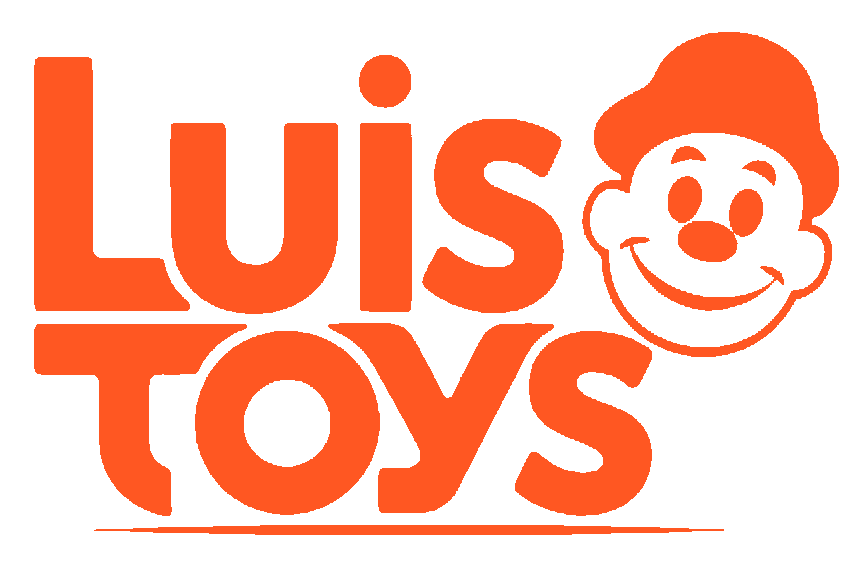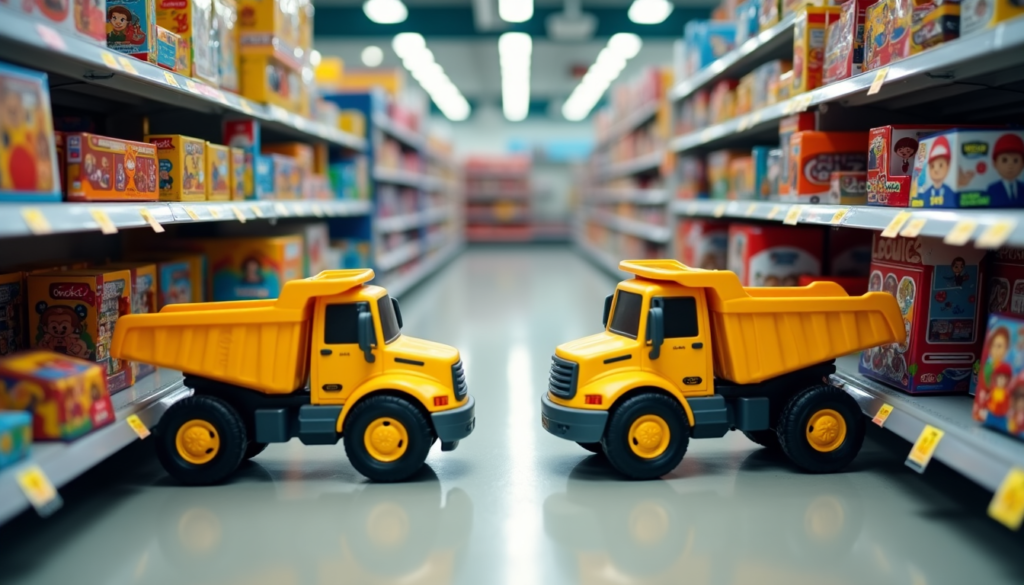How Will Trump’s Tarrifs Impact On Toys Import From China

The new Trump tariffs on Chinese toys will shake up the US toy market badly. American stores get 77% of their toys from Chinese manufacturers. The massive 125% tariff will push toy prices through the roof. A toy that costs $30 today might cost $70 soon. Chinese manufacturers supply 80% of America’s toy imports, so these price hikes will hit most toys on the shelves. American families should expect toy shortages this Christmas. Many manufacturers have stopped their production orders, and stores can’t keep prices low anymore. The problem goes beyond just toys. Holiday stores like The Christmas Loft get 85% of their items from China. This means American shoppers will face tough choices this holiday season.
Trump Imposes 125% Tariffs on Chinese Imports

Image Source: USA Today
Donald Trump raised tariffs on Chinese imports to an unprecedented 125% on April 9, 2025 [1]. This sharp increase came just hours after China boosted duties on American goods to 84%. China made this move to counter earlier U.S. tariff hikes [1].
“Based on the lack of respect that China has shown to the World’s Markets,” Trump announced the immediate tariff increase via his Truth Social platform [2]. He has now raised tariffs on Chinese goods five times since taking office in January [1].
Trump’s approach to China stood out as particularly harsh. He gave “a 90 day PAUSE” to dozens of other countries and the European Union with a lower reciprocal tariff of 10%. These countries showed they were willing to negotiate rather than retaliate [2]. The White House later explained that the 125% tariff adds to an existing 20% duty. This brings the total rate to 145% on all Chinese imports [1].
Money at stake is huge. Chinese imports will bring in about $1.24 billion in tariffs each day once Trump’s new duties take full effect [2]. Yearly tariffs from China alone could exceed $640 billion [2].
How Toy Industry Gets Hit Hardest
These tariffs hit the toy industry especially hard because it relies heavily on Chinese manufacturing. About 80% of toys sold in the United States come from China [3]. This makes toy companies particularly vulnerable to trade disruptions.
“That means 80% of the toys will be twice as expensive this Christmas as they were last Christmas,” said Jay Foreman, CEO of Basic Fun!, a major toy manufacturer [4]. His company stopped production orders for popular brands like Tonka Trucks and Care Bears because of the tariffs [4].
Small business owners in the toy industry face serious risks:
- Beth Benike’s company Busy Baby must pay an extra $200,000 just to ship products into America. She won the Minnesota Small Business Person of the Year award [3]
- Nicolette Warren runs Toothbrush Toys and says she can’t handle the tariff costs at her current business stage [4]
- Kate Wiaz from Baby Paper points out that small manufacturers can’t store extra inventory to reduce the tariffs’ effects [4]
“There likely will be a shortage of toys this Christmas,” Foreman added. He explained that “even a short-term disruption will upset the flow of goods” [4]. The tariffs also affect other holiday items. Most artificial Christmas trees and holiday lights come from China. Some stores say 85% of their inventory is Chinese-made [4].
When Will Price Increases Take Effect
People will notice price changes soon, but the full impact will build up over months. The Toy Association’s president Greg Ahearn says everyone in the industry is “in scramble mode” [4]. Prices will likely jump during this year’s back-to-school season [4].
Price increases paint a clear picture. A $30 item could now cost $70 after tariffs [4]. Toy companies usually make single-digit profit margins, so they can’t absorb these extra costs [4]. Ahearn explained, “You could have anywhere from 35% to potentially even a point-for-point price increase on products depending upon what margin those products run at” [4].
Some retailers tried to bring goods in before the tariffs hit, but that chance has passed [4]. The new rules also remove the duty-free status for postal packages from China worth less than $800 [2]. Starting May 2, these packages will face a 90% tax on their value, capped at $75 in May and rising to $150 from June [1].
Yale’s Budget Lab analysis shows Trump’s latest tariffs will cost middle-class families $4,700 yearly [5]. Toy company stocks dropped sharply after the announcement. Mattel fell more than 16.5%, Hasbro lost over 12%, and Funko dropped 18% [4].
Companies planned to move production to Vietnam, Indonesia, and India. However, these countries now face tariffs of 46%, 32%, and 26% respectively [4]. Industry analysts say this makes moving production “not financially viable” [4].
Toy Manufacturers Halt Production Orders
Toy makers are stopping their production orders across China right now because of Trump’s 125% tariffs. This decision is causing immediate changes throughout the industry.
Basic Fun! Suspends Tonka Truck Manufacturing
Basic Fun!, a Florida-based toy company that makes popular brands like Tonka trucks and Care Bears, has stopped shipping all its China-made toys [4]. “It’s one thing to try to absorb or pass along 10 percent to 20 percent, but 54 percent to [potentially] 104 percent is impossible!” CEO Jay Foreman said. He added that “the consumer will just shut down, as will global trade” [4].
The company faced problems long before this tariff crisis hit. Basic Fun! filed for Chapter 11 bankruptcy protection in June 2024, with debts between USD 50.00 million and USD 100.00 million [1]. The bankruptcy papers showed fewer than 50 creditors and assets worth less than USD 50,000 [1].
Foreman listed several reasons for his company’s money troubles: “Since the demise of our industry’s largest toy retailer, Toys ‘R’ Us in 2018, through the tumult of the trade wars with China in 2019, COVID in 2020 through 2021, the travails of the supply chain crisis in 2022, inventory overstocks in 2023 and a consumer slowdown in the early part of 2024” [1]. Toys ‘R’ Us’s bankruptcy alone cost Basic Fun! USD 6.00 million in unpaid bills, and they got back only USD 1.00 million through insurance [1].
Other Major Brands Follow Suit
Other big toy makers are making similar changes after Basic Fun!’s announcement. MGA Entertainment, which makes Bratz and L.O.L. Surprise! dolls, is quickly moving away from Chinese manufacturing [6]. They plan to move 40% of their production to India, Vietnam, and Indonesia within about six months, up from their current 10-15% non-China production [6].
MGA’s CEO put it bluntly: “A lot of toys cannot be made here. What’s going to happen is the following: Let’s say a toy that was sold for USD 10.00 now will be USD 20.00, right? That means that a lot less people can afford it, which means layoffs, which means a small toy company is going out of business, right here in U.S.A.” [3].
Mattel also plans to reduce its reliance on Chinese manufacturing and will close a factory in China by 2025’s end [6]. Toy company stocks have taken a big hit from the tariff news:
- Mattel shares plunged 26% following Trump’s April tariff announcement [3]
- Jakks Pacific, which makes licensed toys like Sonic the Hedgehog, saw its shares drop 25% [3]
- Hasbro listed tariffs on China as a specific risk to its business in its annual report [6]
Small toy makers face even bigger problems. Many have stopped their China shipments while they wait for news about a possible trade deal [4]. SmartNoggin Toys founder Marcia Haut said, “The recent tariffs more than double our production costs — which we, not China, must pay… The tariffs will make it very hard for us to keep running, and we may need to close” [4].
Supply Chain Disruptions Begin
Production stops are just starting to show their effects. Portland toy shop owners say their supply chains are already breaking down. Some products they’ve paid for are stuck in transit because of tariff-related delays [7]. Greg Ahearn, the Toy Association’s CEO, calls the situation “paralyzing” with “uncertainty, heightened concern, and confusion” [4].
Industry experts say toy shortages will become more obvious as current stocks run out. “Come July, Tonka Trucks, Care Bears, K’nex, Lincoln Logs and many more toys could be completely sold out in the US,” retail analysts warn [4]. Some manufacturers are looking at ways to make toys outside China.
Abacus Brands plans to start making one of its products, Pixicade, in the United States by August [4]. But CEO Steve Rad admits most toys are too complex to make in America [4]. His company might remove some features from their products to cut costs [4].
Learning Express’s franchise council president says retailers are getting letters from suppliers about immediate price hikes [4]. Some retailers are now looking for new suppliers because they suspect current ones of unfairly raising prices on goods imported before the tariffs started [4].
Holiday Toy Prices Could Double by Christmas
American families will face a tough holiday shopping season as toy prices are projected to double by Christmas 2025. China manufactures 80% of U.S. toy imports, and Trump’s tariffs will make their effects felt in every toy store aisle [5].
Popular Action Figures Face 80% Price Hike
Action figures will take the biggest hit, with prices expected to rise up to 80% on popular toy lines. Basic Fun!’s CEO Jay Foreman says a Tonka Classic Steel Mighty Dump Truck that now costs $29.99 will cost $39.99 by fall [8]. These price changes will keep going up through the holiday season.
“That means 80% of the toys will be twice as expensive this Christmas as they were last Christmas,” Foreman said [9]. The numbers are shocking – a $30 toy could end up costing $70 once the tariffs take full effect [5].
These increases will hit almost every type of toy. Toy companies work with very small profit margins, usually in high single digits. They don’t know how to absorb these extra costs [2]. Most companies will have to pass these costs to shoppers.
Electronic Toys See Steepest Increases
Electronic toys that need complex parts from China will see the biggest price jumps. Market research shows electronic toys could cost up to 60% more [10].
The OnePlus Watch 3’s price has already jumped from $330 to $500 – a huge $170 increase [10]. Smart toys, educational devices, and gaming accessories will likely follow this trend.
The Toy Association’s president and CEO Greg Ahearn says shoppers should expect to pay 15% to 20% more for games, dolls, cars, and other toys by back-to-school season [8]. Prices will keep climbing until the holidays.
“You could have anywhere from 35% to maybe even a point-for-point price increase on products depending upon what margin those products run at,” Ahearn explained [2]. The global toy manufacturing setup makes these increases unavoidable.
Budget Toys Become Luxury Items
Budget-friendly toys that families count on will become expensive luxuries. Market data shows toys priced between $4.99 and $19.99 will see the biggest changes [8].
“The greatest budgetary impact will hit the folks who can afford it the least,” said Ahearn from The Toy Association [2]. Simple gifts will become major purchases for many families.
Christmas decorations face similar challenges. China makes most artificial trees and holiday lights. Greg Vander Veer, who co-owns The Christmas Loft in New Hampshire, says China supplies about 85% of their stock [9].
“The Loft will absorb some of the cost, but I imagine we’ll have to raise the prices at least 50 percent,” Vander Veer said [9]. This creates a bigger challenge for families planning their holiday shopping.
Small toy stores worry about their future. “It scares the devil out of me,” a Minnesota hobby shop owner said. “We can either pay the bills and raise prices, or try and absorb them and go out of business” [9].
These price increases will create shortages as people rush to buy popular items before prices go up. “There likely will be a shortage of toys this Christmas,” Foreman said. “Even a short-term disruption will upset the flow of goods” [9].
US Retailers Scramble to Adapt to China Toy Tariffs
Image Source: CNBC
American retailers are making quick business changes as Trump’s tariffs on Chinese toys threaten their holiday sales plans. The 125% levy has pushed companies to make tough choices about their stock, prices, and future product lines.
Walmart and Target Revise Holiday Forecasts
Walmart, America’s largest retailer and biggest importer of containerized goods, stood by its annual sales forecast but admitted a wider “range of outcomes” for first-quarter operating income because of tariff pressures [11]. The retail giant stays committed to keeping prices low despite tariff challenges and has cut prices on over 10,000 items to keep its market share [11].
“I have seen us guide through times like the period after 9/11, the global financial crisis, the pandemic, and more recently high inflation,” a Walmart executive said, showing confidence in handling tariff disruptions [11].
Target, on the other hand, told investors that tariff uncertainty would “weigh on the retailer’s profit in the first quarter” [12]. The company now moves its store brand production away from China, where 30% of these products originate, to countries like Guatemala and Honduras in the Western Hemisphere [12].
Both retail giants now deal with tougher supplier talks, as manufacturers want higher prices while retailers try to protect inflation-weary consumers from extra costs [7].
Small Toy Stores Face Existential Threat
Small toy stores face crushing challenges from Trump’s toy tariffs. These independent stores run on tiny profit margins with little financial backup, unlike big retail chains.
“We try to keep our profit margins lower to keep prices down for our customers, so there isn’t a lot of wiggle room,” said Lyndsey Simpson, who co-owns Hendersonville Toy Company [4]. Many small store owners have already gotten letters from suppliers about immediate price hikes [4].
Happy Up Inc.’s owner Shawnta’ Ray in St. Louis must raise retail prices as wholesale costs go up, with 75-85% of their toys coming from China [4]. A Minnesota hobby shop owner put it plainly: “We can either pay the bills and raise prices, or try and absorb them and go out of business” [9].
Online Retailers Adjust Pricing Algorithms
E-commerce sites are updating their complex pricing algorithms to handle the new tariff situation. These computer programs that automatically adjust prices based on market conditions and competitor behavior must now factor in unexpected tariff-driven cost increases [13].
Online stores usually use algorithms that watch competitors’ websites to match price changes quickly [13]. Economists warn this rapid competitive pricing might backfire and lead to higher overall prices as retailers know their competitors will match any price cuts instantly [13].
Some online platforms look at ways to slow down price changes or stop competitor-based pricing completely—changes that experts think could help consumers during this tariff period [13].
Consumers Search for Alternatives to Chinese-Made Toys

Image Source: Alamy
American families are scrambling to find alternatives to Chinese-made toys as Trump’s tariffs shake up the toy industry. The U.S. toy market depends heavily on China, with nearly 80% of toys sold in the U.S. coming from China [1]. This leaves shoppers with few choices as the holidays get closer.
European Toy Brands Gain Market Share
The tariff situation has created unexpected opportunities for European toy manufacturers. These companies can now expand their presence in the U.S. market since they’re not affected by the steep 125% tariffs. Many specialty retailers have started to stock more European-made options.
European toy makers focus on higher-quality materials and stricter safety standards, which leads to premium prices. Their wooden toys and educational products have always had a small but loyal following in America.
Retailers are rushing to contact new suppliers as the market keeps changing. Shoppers now face a tough choice: pay more for Chinese-made toys or switch to different products.
Domestic Toy Production Capacity Limitations
American manufacturing could step up, but several roadblocks stand in the way of quick expansion:
- Cra-Z-Art plans to curb tariff costs by expanding its U.S. production space by 50% [14]
- Simplay3, an Ohio-based toymaker, has “hired 10% more workers and runs this operation 24/7” to meet customer needs [15]
- Abacus Brands found a Texas factory that can make its Pixicade toy without extra costs [1]
The shift to American production isn’t practical for most complex toys. Abacus Brands CEO Steve Rad can’t see U.S. production as an option for his other toys [1].
The biggest problem is that “the high skilled and lower cost labor force that is available in China is not currently available” in the U.S. [1]. Building a manufacturing system like China’s would take decades. Right now, only simple toys or those with few parts can move to U.S. production without huge price increases.
Mattel shows this partial approach works. The company “targets a plan to reduce the number of toys produced in China to 40% of its manufacturing mix, down from a current 50%” [16]. This shows that even major manufacturers can only make small changes to reduce their reliance on China.
Industry Experts Predict Long-Term Market Shifts
Trump’s tariffs have sent shockwaves through the toy industry, and experts predict these changes will reshape global manufacturing forever. The 125% levy on Chinese imports speeds up changes that were already happening in the sector.
Manufacturing Relocates to Vietnam and India
Big toy makers are rushing to broaden their production beyond China, though other locations come with their own tax hurdles. MGA Entertainment, which makes Bratz and L.O.L. Surprise! dolls, wants to boost its production in India, Indonesia and Vietnam from 15% to 40% in six months [17]. Mattel’s strategy ensures no single country makes up more than 25% of its global manufacturing [17].
These alternative manufacturing spots still face high tariffs: Vietnam (46%), Indonesia (32%), and India (26%) [17]. These numbers make some production changes financially impossible [2].
India’s toy industry has emerged as a big winner in this shake-up. The country’s quality standards and customs duties have cut Chinese toy imports from USD 214 million in FY13 to USD 41.6 million in FY24 [6].
Toy Companies Invest in Automation to Reduce Costs
American manufacturing is seeing record investment through automation:
- Cra-Z-Art’s Tennessee and Florida factories are growing by 50%, adding over 500,000 square feet with “millions of dollars” in high-speed automation equipment [3]
- Chinese workers earn USD 3-4 hourly, which is nowhere near American wages, making technology essential [3]
- Domestic plastic costs less than Chinese options and eliminates overseas shipping costs of USD 4,000-11,000 per container [3]
This push toward automation helps bring some toy production back to America profitably. Cra-Z-Art now makes about 35% of its products in the U.S. and plans to reach at least 45% [3].
Premium Toy Segment Grows as Mass Market Shrinks
Market segments will split further as tariffs change pricing structures. Affordable toys might become mid-range products, while premium items could get more exclusive. Henry Bear’s Park now actively looks for American-made alternatives, seeing this as a chance to improve their product mix rather than a temporary fix [18].
Small manufacturers’ survival depends on rebuilding their production processes. Hey Buddy Hey Pal, which earlier moved from Vietnam to China, might reverse course to reduce the overall effect [18].
Conclusion
Trump’s massive 125% tariffs on Chinese toys have changed the American toy industry completely. American manufacturers have stopped production, retailers are trying to cope, and consumers will pay double the prices when shopping for holidays in 2025. Small businesses face the toughest challenges as they must choose between huge price hikes or shutting down.
All the same, this shake-up has sped up some important changes in how toys are made worldwide. Big companies now spread their manufacturing beyond China, though places like Vietnam and India come with their own tax issues. American manufacturers have boosted local production through automation, but experts say this covers only a small part of what people need.
The toy industry will look very different after 2025. Shoppers should get ready to pay more, have fewer choices, and might not find popular toys easily. European brands and American manufacturers might grab a bigger share of the market. The complete overhaul of toy supply chains will leave a lasting mark on both business costs and shopping habits. These changes will stick around even if future presidents change the tariff rules, which shows a permanent change in how toys make their way to American homes.
References
[1] – https://www.nbcwashington.com/news/national-international/toys-expected-cost-more-new-us-tariffs-china/3860525/?os=slie1&ref=app
[2] – https://www.cnbc.com/2025/04/04/toy-prices-trump-tariffs-china-vietnam.html
[3] – https://nypost.com/2025/03/13/business/uss-biggest-toy-maker-cra-z-art-to-expand-domestic-factories/
[4] – https://www.giftsanddec.com/blog/toy-makers-retailers-talk-tariffs-there-isnt-a-lot-of-wiggle-room/
[5] – https://www.independent.co.uk/life-style/toy-company-donald-trump-tariff-christmas-b2731247.html
[6] – https://brandequity.economictimes.indiatimes.com/news/business-of-brands/indias-toy-industry-gains-as-us-tariffs-hit-china-vietnam-hard/120052576
[7] – https://www.pymnts.com/news/retail/2025/walmart-and-target-wrangling-with-suppliers-following-tariffs/
[8] – https://www.fastcompany.com/91292305/toy-companies-raising-prices-trump-tariffs-china
[9] – https://people.com/toy-company-ceo-says-many-toys-twice-as-expensive-by-christmas-china-tariffs-11712856
[10] – https://www.wired.com/story/tariffs-are-going-to-make-your-electronics-more-expensive/
[11] – https://www.reuters.com/business/retail-consumer/walmart-reaffirms-annual-sales-forecast-2025-04-09/
[12] – https://www.reuters.com/business/retail-consumer/target-sees-near-term-profit-squeeze-tariffs-cautious-spending-2025-03-04/
[13] – https://www.brookings.edu/articles/are-online-prices-higher-because-of-pricing-algorithms/
[14] – https://www.manufacturing.net/operations/news/22936042/toy-manufacturer-responds-to-tariffs-by-increasing-domestic-production
[15] – https://www.foxbusiness.com/economy/us-toymakers-see-boost-from-trump-tariffs-bolster-domestic-manufacturing
[16] – https://licensinginternational.org/news/toymakers-focus-on-value-amid-tariffs/
[17] – https://www.reuters.com/business/retail-consumer/major-us-toymaker-speeds-up-plan-move-manufacturing-out-china-2025-03-13/
[18] – https://www.giftsanddec.com/trending-gifts/kids/toy-makers-retailers-talk-tariffs-there-isnt-a-lot-of-wiggle-room/





